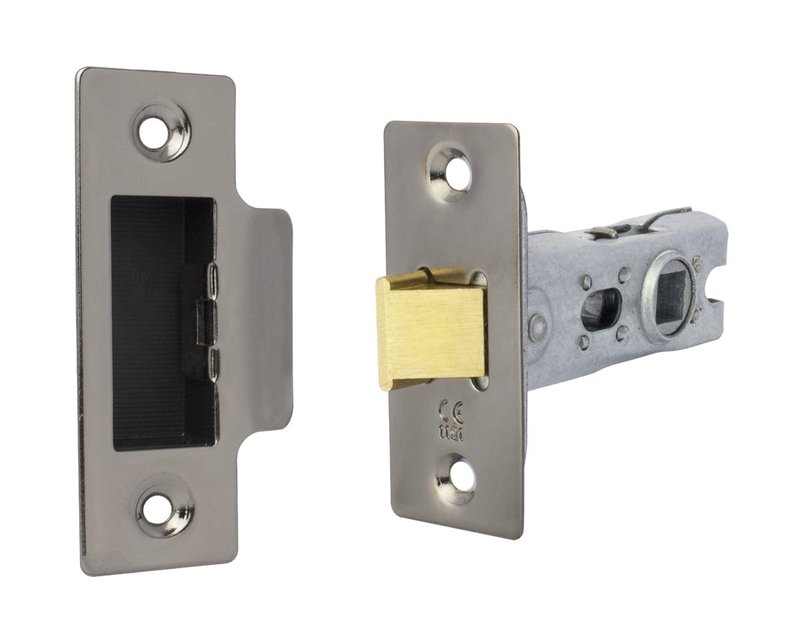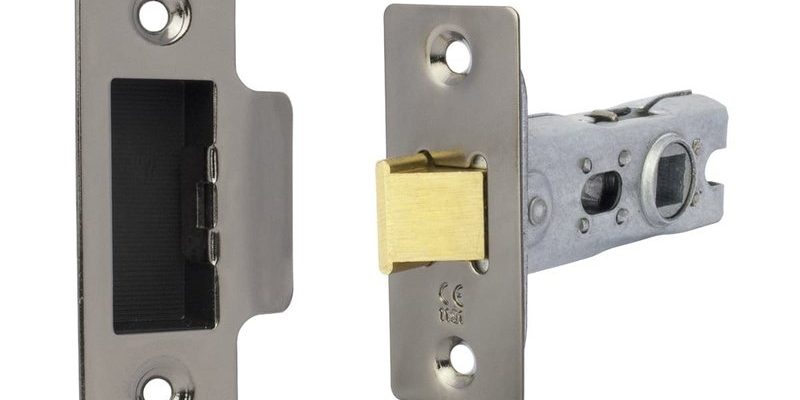
Imagine you’re at a coffee shop, enjoying a warm cup while pondering which latch is best for your front door. Maybe you’ve heard some buzz about tubular and mortise latches but aren’t sure what makes them tick. It’s a bit like comparing apples to oranges; while both serve the same purpose, they bring different strengths to the table. Let’s unravel the details together.
What Are Tubular Latches?
Tubular latches are commonly used in residential doors. They are designed in a cylindrical shape, hence the name “tubular.” Generally, you’ll find them in lightweight, interior doors, helping to keep things simple. The good thing about tubular latches is their ease of installation. They usually fit into a bore hole drilled into the door, making them a popular choice for DIY enthusiasts and homeowners alike.
Here’s the thing: Tubular latches function by using a spring mechanism. When you turn the door handle, the latch retracts, allowing you to open the door. Once you release the handle, the latch returns to its original position, sealing the door shut. A classic example of a tubular latch can be found in bathroom doors or closet doors—places where privacy is important, but security isn’t the top concern.
One limitation is that tubular latches don’t always offer the best security. They’re relatively simple in design, which can make them vulnerable to forced entry. If you’re considering them for an exterior door, you might want to reinforce them with a deadbolt for added safety.
What Are Mortise Latches?
Now let’s talk about mortise latches. These are like the heavyweights of the latch world. Mortise latches are installed inside a pocket cut into the door, which is called a mortise. This installation method provides a snug fit, which increases durability and strength. You’ll often find mortise latches in commercial settings or more upscale residential doors.
These latches use a more complex mechanism compared to their tubular counterparts. When you turn the handle, the latch slides out of the way, allowing the door to open. This might sound similar to a tubular latch, but mortise latches usually incorporate additional features, such as deadbolts or even electronic locking mechanisms. They are designed to provide excellent security, making them a top choice for main entry doors.
Mortise latches can come with various options for including knobs or handles, and they often support access control systems. If you’ve ever been in a hotel room, chances are you’ve encountered this type of latch. It’s the go-to choice for places that prioritize both security and style.
Key Differences Between Tubular and Mortise Latches
While both types serve similar purposes, they do have notable differences. Let’s break down a few key points:
- Installation: Tubular latches require a simple bore hole, while mortise latches need more extensive cuts and adjustments to fit snugly in the door.
- Security: Mortise latches generally offer better security features compared to tubular latches, which are simpler in design.
- Construction: Mortise latches are built into the door for a more robust installation, whereas tubular latches are mounted on the surface.
- Applications: Tubular latches are often found in interior doors, while mortise latches are more common in exterior doors and commercial buildings.
Understanding these differences can help you choose the right latch for your specific needs. Whether you prioritize convenience or security, knowing the distinctions can make your decision easier.
When to Use Tubular Latches
You might be wondering when it’s best to opt for a tubular latch. These latches shine in specific scenarios, particularly where design simplicity and ease of installation are priorities. If you’re replacing a latch in an interior door or a closet, tubular latches work great. Their straightforward design means you can often install them without a professional.
Tubular latches are also quite affordable, making them a popular option for many homeowners on a budget. However, keep in mind that they aren’t the best choice for high-security areas. If you’re considering them for external doors, pairing them with a robust deadbolt can improve your home’s overall security.
In short, tubular latches are excellent for low-security needs where style and convenience matter more than security.
When to Use Mortise Latches
Mortise latches are your go-to choice when security and durability take precedence. They excel in high-traffic areas and are perfect for exterior doors that face the elements. If you’re building or renovating a home and want both beauty and brawn, mortise latches fit the bill perfectly.
Aside from security, these latches allow for a broader range of design options. You can choose handles and knobs that suit your style without compromising on strength. Many modern mortise latches even support smart locks, offering tech-savvy homeowners a way to control access from their smartphones.
In essence, if you value security and aesthetics, especially for main entry doors, mortise latches are the right choice.
Cost Comparison
When it comes to budget, there’s a noticeable difference between tubular and mortise latches. Generally, tubular latches are more affordable, often costing between $10 to $30. Their simpler construction contributes to lower manufacturing costs, which is great for homeowners looking to save a few bucks.
On the other hand, mortise latches are pricier due to their complex design and durability. You can expect to spend anywhere from $30 to $100 or more, depending on the features and brand. While the upfront cost is higher, the investment often pays off in terms of security and longevity.
Consider your needs and budget. Are you looking for a quick fix, or do you want a lasting solution? This will help guide your choice.
Installation Process
Now that we’ve covered the costs, let’s briefly touch on the installation. If you’re a DIY enthusiast, installing a tubular latch can be fairly straightforward:
1. Drill a bore hole (usually 2-1/8 inches) through the door where you want the latch.
2. Insert the latch into the hole and ensure it fits snugly.
3. Attach the strike plate to the door frame, aligning it with the latch.
4. Test the latch by turning the handle and ensuring it opens and closes smoothly.
For mortise latches, the installation is a bit more involved:
1. Cut the mortise into the door using a chisel or mortise jig to create a pocket for the latch.
2. Fit the latch into the pocket and secure it using screws.
3. Install the strike plate on the door frame, matching it to the latch mechanism.
4. Test the latch to ensure it functions correctly.
Regardless of the type you choose, proper installation is key to ensuring your latch works effectively.
Final Thoughts
Choosing between tubular and mortise latches ultimately boils down to your specific needs. Tubular latches are perfect for quick, low-cost solutions for interior doors, while mortise latches offer enhanced security and durability for main entry points. Understanding their differences can guide your decision-making process.
Next time you consider upgrading your door hardware, keep these points in mind. By selecting the right latch, you can enhance both the safety and style of your home. Remember, it’s not just about locking a door; it’s about feeling secure in your space.
